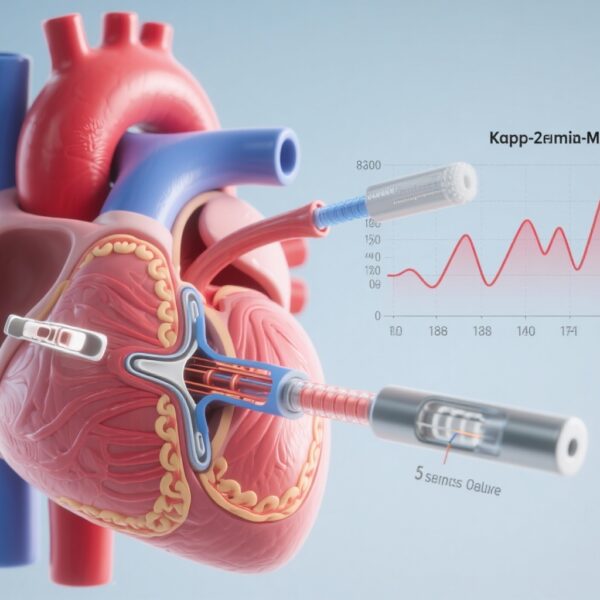Highlight
- Aerobic exercise significantly reduces depressive symptoms in children and adolescents.
- Optimal benefits seen with moderate-intensity exercise (4.0-5.9 METs), 30-45 min per session, 3-4 times weekly over 6-10 weeks.
- The ideal dose for symptom improvement is approximately 590 METs-minutes per week.
- Effects are more pronounced in adolescents and those with clinically diagnosed depression.
Study Background
Depression is among the leading causes of morbidity in children and adolescents worldwide, often resulting in significant functional impairment and reduced quality of life. Despite the availability of pharmacological and psychological interventions, challenges such as adverse effects, limited adherence, and accessibility issues persist. Physical exercise has emerged as a promising adjunct or alternative treatment modality. Aerobic exercise, in particular, is associated with mood-enhancing neurobiological effects. However, optimal exercise parameters (intensity, duration, frequency) remain unclear, especially in the pediatric population. This meta-analysis and dose-response study by Wang et al. aimed to elucidate the most effective aerobic exercise regimen for reducing depressive symptoms in children and adolescents, thus filling a critical gap for clinical guidelines and intervention design.
Study Design
A systematic literature search was performed across five major databases: PubMed, MEDLINE, Embase, CENTRAL, and Web of Science up to September 2024. Inclusion criteria were randomized controlled trials (RCTs) investigating aerobic exercise interventions among children and adolescents aged 6 to 19 years, with outcomes measured by validated scales of depressive symptoms.
A total of 18 RCTs encompassing 1540 participants were included. The meta-analysis calculated standardized mean differences (SMD) to assess effect size, with 95% confidence or credible intervals (CI/CrI). Subgroup analyses evaluated effects by age group (children vs. adolescents), depression status (clinical diagnosis vs. elevated symptoms), and exercise characteristics (intensity, frequency, duration). Dose-response relationships were assessed using METs-minutes per week, integrating intensity and duration.
Key Findings
The meta-analysis demonstrated that aerobic exercise significantly reduced depressive symptoms immediately post-intervention (SMD: -0.37; 95% CI: -0.59 to -0.15) and during follow-up (SMD: -0.51; 95% CI: -0.85 to -0.18), indicating sustained benefits.
Subgroup analyses revealed:
– Adolescents experienced larger symptom reductions than younger children.
– Participants with clinically diagnosed depression had more robust improvements compared to those with subclinical symptoms.
– Moderate-intensity aerobic exercise (defined as 4.0-5.9 METs) was more efficacious than low or high intensity.
– Optimal session characteristics involved 30 to 45 minutes of exercise, 3 to 4 times weekly, over a period of 6 to 10 weeks.
The dose-response analysis pinpointed an optimal overall aerobic exercise dose of 590 METs-min/week yielding the greatest symptom relief (SMD: -0.46; 95% CrI: -0.78 to -0.10). A practical effective dose range was observed between 360 to 780 METs-min/week, supporting flexibility in tailoring exercise prescriptions within this window.
Table 1 summarizes the relationship between exercise dose and depressive symptom reduction:
| Aerobic Exercise Dose (METs-min/week) | Effect Size (SMD) | Confidence Interval |
|---|---|---|
| Below 360 | -0.15 | -0.30 to 0.00 |
| 360-780 | -0.46 | -0.78 to -0.10 |
| Above 780 | -0.40 | -0.70 to -0.08 |
Importantly, no adverse events related to exercise interventions were reported across studies, supporting safety.
Expert Commentary
The findings affirm aerobic exercise as an accessible, cost-effective intervention to mitigate depressive symptoms in young populations, with mechanistic backing including enhanced neurogenesis, inflammatory modulation, and psychosocial benefits related to social engagement during group activities. The moderate intensity range likely balances efficacy with feasibility and adherence. While the meta-analysis comprehensively integrates current evidence, limitations include heterogeneity in exercise protocols, depression severity, and assessment tools among trials. Future research should standardize intensity measurement, explore long-term adherence effects, and examine integration with standard treatments.
Clinical guidelines increasingly endorse physical activity for mental health, but precise dosing recommendations have been lacking. This study provides quantitative dosing guidance that clinicians and program designers can use to optimize interventions.
Conclusion
Aerobic exercise emerges as a potent modality to reduce depressive symptoms in children and adolescents, with the strongest evidence in adolescents with clinical depression. Moderate-intensity exercise performed 30-45 minutes per session, 3-4 times weekly over 6-10 weeks, delivering an optimal dose near 590 METs-minutes per week, offers clinically meaningful symptom improvement. These insights offer practical parameters for clinicians, educators, and mental health practitioners to design targeted, effective exercise-based interventions and support personalized treatment plans for youth depression.
Funding and Clinical Trials Registration
The original meta-analysis did not detail funding sources or clinical trial registrations within the summary.
References
Wang J, Chen L, Liang Y, Chen T, Yuan Y, Yang Y, Fang H, Xie T, Zhuang J. Optimal dose of aerobic exercise for reducing depressive symptoms in children and adolescents: A meta-analysis of randomized controlled trials and dose-response analysis. J Affect Disord. 2025 Oct 15;387:119501. doi: 10.1016/j.jad.2025.119501. Epub 2025 May 27. PMID: 40441657.



